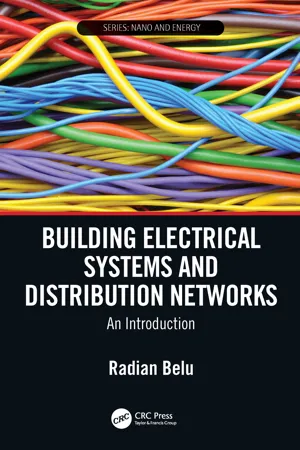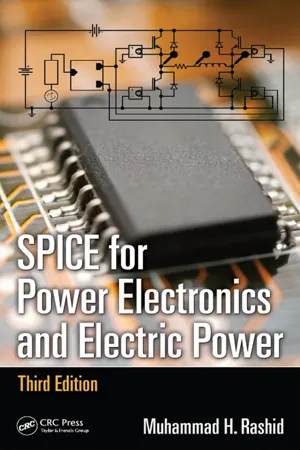Physics
Dependent Sources
Dependent sources in physics are electrical or electronic elements whose output is controlled by an external voltage or current. They are characterized by their ability to generate a voltage or current that is dependent on another voltage or current in the circuit. Dependent sources are commonly used in circuit analysis and design to model real-world systems.
Written by Perlego with AI-assistance
Related key terms
Related key terms
1 of 4
Related key terms
1 of 3
5 Key excerpts on "Dependent Sources"
- eBook - ePub
- John Santiago(Author)
- 2013(Publication Date)
- For Dummies(Publisher)
Chapter 10 .Understanding Linear Dependent Sources: Who Controls WhatA dependent source is a voltage or current source controlled by either a voltage or a current at the input side of the device model. The dependent source drives the output side of the circuit. Dependent Sources are usually associated with components (or devices) requiring power to operate correctly. These components are considered active devices because they require power to work; circuits using these devices are called active circuits. Active devices such as transistors perform amplification, allowing you to do things like crank up the volume of your music.When you’re dealing with active devices operating in a linear mode, the relationship between the input and output behavior is directly proportional. That is, the bigger the input, the bigger the output. Mathematically for a given input x, you have an output y with a gain amplification of G: y = Gx.The constant or gain G is greater than 1 for active circuits (think steroids) and less than 1 for passive circuits (think wimpy). In other engineering applications, technical terms for G include scale factor, scalar multiplier, proportionality constant, and weight factor - eBook - ePub
Building Electrical Systems and Distribution Networks
An Introduction
- Radian Belu(Author)
- 2020(Publication Date)
- CRC Press(Publisher)
It is worth noting that KVL is a discrete version of Faraday's law, valid to the extent that no time-varying flux links the loop. KCL is just charge conservation, no charge accumulation at any node. Network elements affect voltages and currents in three ways: (1) voltage sources constrain the potential difference across their terminals to be of a fixed value (the source value); (2) current sources constrain the current through the branch to be of some fixed value; and (3) all other elements impose some sort of relationship, either linear or nonlinear, between voltage across and current through a branch. Voltage and current sources can be either independent or dependent. InDependent Sources have values that are, as the name implies, independent of other variables in a circuit. Dependent Sources have values that depend on some other variable in a circuit. A common example of a dependent source is the equivalent current source used for modeling the collector junction in a transistor. Typically, this is modeled as a current-dependent current source, in which collector current is taken to be directly dependent on emitter current. Such Dependent Sources must be handled with some care, for certain tricks we will be discussing below do not work with them. For the present time, we will consider, in addition to voltage and current sources, only impedance elements, which impose a linear relationship between voltage and current.2.1.1Linearity and Superposition
An extraordinarily powerful notion of the network theory is linearity. This property has two essential elements, stated as follows:This is important to us at the present moment for two reasons:- For any single input x yielding output y, the response to an input k·x is k·y for any value of k.
- If, in a multi-input network the input x1 by itself yields output y1 and a second input x2 by itself yields y2 , then the combination of inputs x1 and x2 yields the output y = y1 + y2 .
- It tells us that the solution to certain problems involving networks with multiple inputs is actually easier than we might expect: If a network is linear, we may solve for the output with each separate input, and then by adding the outputs, we can get the solution. This is called superposition.
- It also tells us that, for networks that are linear, it is not necessary to actually consider the value of the inputs in calculating response. What is important is a system function, or a ratio of output to input.
Superposition is an important principle when dealing with linear networks, and can be used to make analysis easier. If a network has multiple inDependent Sources, it is possible to find the response to each source separately, and then add up all of the responses to find the total response. A particularly important ramification of the property of linearity is expressed by equivalent circuits. If we are considering the response of a network at any given terminal pair, from the linearity properties, if the network is linear, the output at a single terminal pair (either voltage or current) is the sum of two components: - eBook - ePub
Mechanical Engineers' Handbook, Volume 2
Design, Instrumentation, and Controls
- Myer Kutz(Author)
- 2015(Publication Date)
- Wiley(Publisher)
Although Dependent Sources are elements used in circuit analysis, they are conceptually different from the other circuit elements. The linear resistor and ideal switch are models of actual devices called resistors and switches. But Dependent Sources are not listed in catalogs. For this reason Dependent Sources are more abstract, since they are not models of identifiable physical devices. Dependent Sources are used in combination with other resistive elements to create models of active devices.A voltage source acts like a short circuit when it is turned off. Likewise, a current source behaves like an open circuit when it is turned off. The same results apply to Dependent Sources, with one important difference. Dependent Sources cannot be turned on and off individually because they depend on excitation supplied by inDependent Sources. When applying the superposition principle or Thévenin's theorem to active circuits, the state of a dependent source depends on excitation supplied by inDependent Sources. In particular, for active circuits the superposition principle states that the response due to all inDependent Sources acting simultaneously is equal to the sum of the responses due to each independent source acting one at a time.Analysis with Dependent Sources
With certain modifications the circuit analysis tools developed for passive circuits apply to active circuits as well. Circuit reduction applies to active circuits, but the control variable for a dependent source must not be eliminated. Applying a source transformation to a dependent source is sometimes helpful. Methods like node and mesh analysis can be adapted to handle Dependent Sources as well. But the main difference is that the properties of active circuits can be significantly different from those of the passive circuits.In the following example the objective is to determine the current, voltage, and power delivered to the output load in Fig 35 . The control current is found using current division in the input circuit:Similarly the output current is found using current division in the output circuit:But at node KCL requires that . Combining this result with the equations for and - eBook - ePub
Basic Electric Circuit Theory
A One-Semester Text
- Isaak D. Mayergoyz, W. Lawson(Authors)
- 2012(Publication Date)
- Academic Press(Publisher)
op-amp for short) and is realized via an integrated circuit which contains many transistors, resistors, and capacitors. We will not get into the details of the internal structure—that is left for a future course on electronics. Instead, we characterize the op-amp in terms of its terminal properties and use them to analyze many circuits containing op-amps. These circuits can be used to isolate loads from sources, amplify voltage or current signals, invert signals, add signals together, integrate signals, or differentiate them. The chapter is concluded with a demonstration that op-amp circuits can act as analog computers and sine wave generators.8.2 Dependent Sources as Linear Models for Transistors
There are four types of Dependent Sources: voltage-controlled voltage sources (VCVS), current-controlled voltage sources (ICVS), voltage-controlled current sources (VCIS), and current-controlled current sources (ICIS). The Dependent Sources are represented by diamond notations instead of circles as with inDependent Sources. The circuit notations for the four sources are shown in Figure 8.1 . In this figure,vxandixare controlling voltages and currents, respectively. In these notations, controlling branches are shown adjacent to Dependent Sources. This may not be the case for actual circuits! The constants A, G , and R are factors which couple controlling quantities with sources. Usually, A has the meaning of amplification factor and is dimensionless, while G and R have the dimensions of conductance and resistance, respectively. (They are often called transconductances and transresistances.) This explains the notations for the coupling factors. In summary, in order to specify a dependent source we have to specify a controlling branch and a coupling factor.Figure 8.1 Circuit notation for various Dependent Sources.Where do Dependent Sources come from? The answer is: Dependent Sources usually appear in electric circuits as linear models for transistors . To understand how they fulfill this role, we must briefly examine transistors themselves.There are two most important types of transistors. The first kind is the bipolar junction transistor, or BJT. A diagram of the BIT is shown in Figure 8.2 . The BIT is made out of a semiconductor which has three distinct regions (n+ , p, n− ), each one connected to an ohmic contact. The three ohmic contacts are called the emitter, the collector, and the base and they are specified in Figure 8.2 - eBook - ePub
- Muhammad H. Rashid(Author)
- 2017(Publication Date)
- CRC Press(Publisher)
Note: IIN assumes 2 A for DC analysis, 1 A with a delay angle of 30° for AC analysis, and a sine wave of 2 A at 10 kHz for transient analysis. This allows source specifications for different analyses in the same statement.4.3.3 SCHEMATIC INDEPENDENT SOURCESThe PSpice source library source.slb is shown in Figure 4.12a . DC voltage and current sources are shown in Figure 4.12b and c . The user can change the values of the sources.The generic source VSRC can specify transient, AC, and DC specifications in one source as shown in Figure 4.13 .4.4 Dependent Sources There are five types of Dependent Sources: 1. Polynomial source 2. Voltage-controlled voltage source 3. Current-controlled current sourceFIGURE 4.12 Independent DC sources.FIGURE 4.13 Symbol and properties of VSRC source for types of multiple analyses.4. Voltage-controlled current source 5. Current-controlled voltage source4.4.1 POLYNOMIAL SOURCELet us call the three controlling variables A, B, and C, and the output sources, Y. Figure 4.14 shows a source Y that is controlled by A, B, and C. The output source Y takes the formY = f(A , B , C , …)where Y can be a voltage or current, and A, B, and C can be a voltage or current or any combination. The symbol of a polynomial or nonlinear source is POLY(n), where n is the number of dimensions of the polynomial. The default value of n is 1. The dimensions depend on the number of controlling sources. The general form isPOLY(n) <(controlling)nodes> <(coefficient) values>The output sources or the controlling sources can be voltages or currents. For voltage-controlled sources, the number of controlling nodes must be twice the number of dimensions. For current-controlled sources, the number of controlling sources must be equal to the number of dimensions. The number of dimensions and the number of coefficients are arbitrary.
Index pages curate the most relevant extracts from our library of academic textbooks. They’ve been created using an in-house natural language model (NLM), each adding context and meaning to key research topics.
Explore more topic indexes
Explore more topic indexes
1 of 6
Explore more topic indexes
1 of 4




